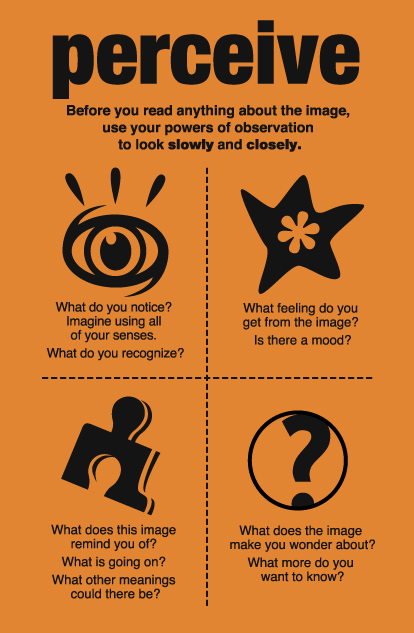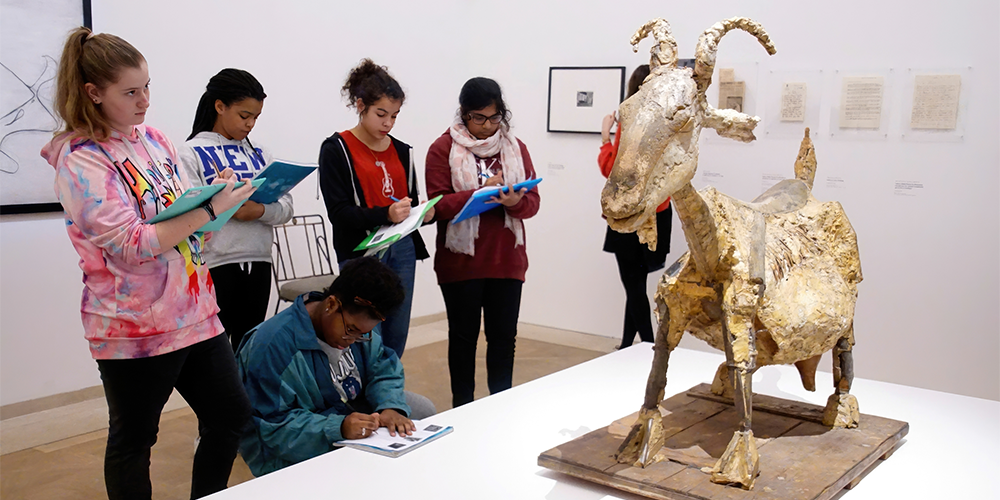Almost 20 years ago, I participated in a fellowship for the Minnesota Writing Project, which allowed me to build upon my teaching tools along with my own writing. Our group traveled to the Weisman Museum on the University of Minnesota campus to learn how to connect art with writing for students. What followed was an introduction to Artful Writing and a foray into student-driven questioning and interpretation.
As a result, showing students how to write about visual media is now one of my favorite strategies, because the details and interpretation of art are in the eye of the beholder. The Artful Writing process “Perceive” (pictured below), allows students to use their senses to identify thoughts and feelings while observing visual media:

A favorite image that helps students perceive is the following painting from the Weisman Art Museum, by Douglas Argue. There is much to “unpack” here, leading students to think beyond the obvious.
Watch this video of teacher Melissa Borgmann-Kiemde using the above image to walk through the Perceive process with a student.
Give it a try- you might be surprised where it leads!

You can use Artful Writing, too! Here are a few tips:
- Explore museum sites, Google Arts and Culture, or free photo sites like Pixabay or Unsplash, to determine the visual media students will consider.
- Use the Perceive questions to break down how students might interpret the visual.
- Ask follow-up questions to help students deepen their thinking. Thinking Classrooms guru Peter Lijidahl provides helpful guidance on “keep thinking” questions.
- Once students have developed their perspective about the image, you can move in a direction suitable for your curriculum.
Be sure to investigate the resources for Artful Writing in the Activities section of the Weisman’s site, along with artwork for students to interpret. Project Zero’s Artful Thinking is also a fantastic resource to explore this topic.
Artful Writing is a great strategy to engage reluctant writers, help students center their thinking, and use their senses to find their perspective.






